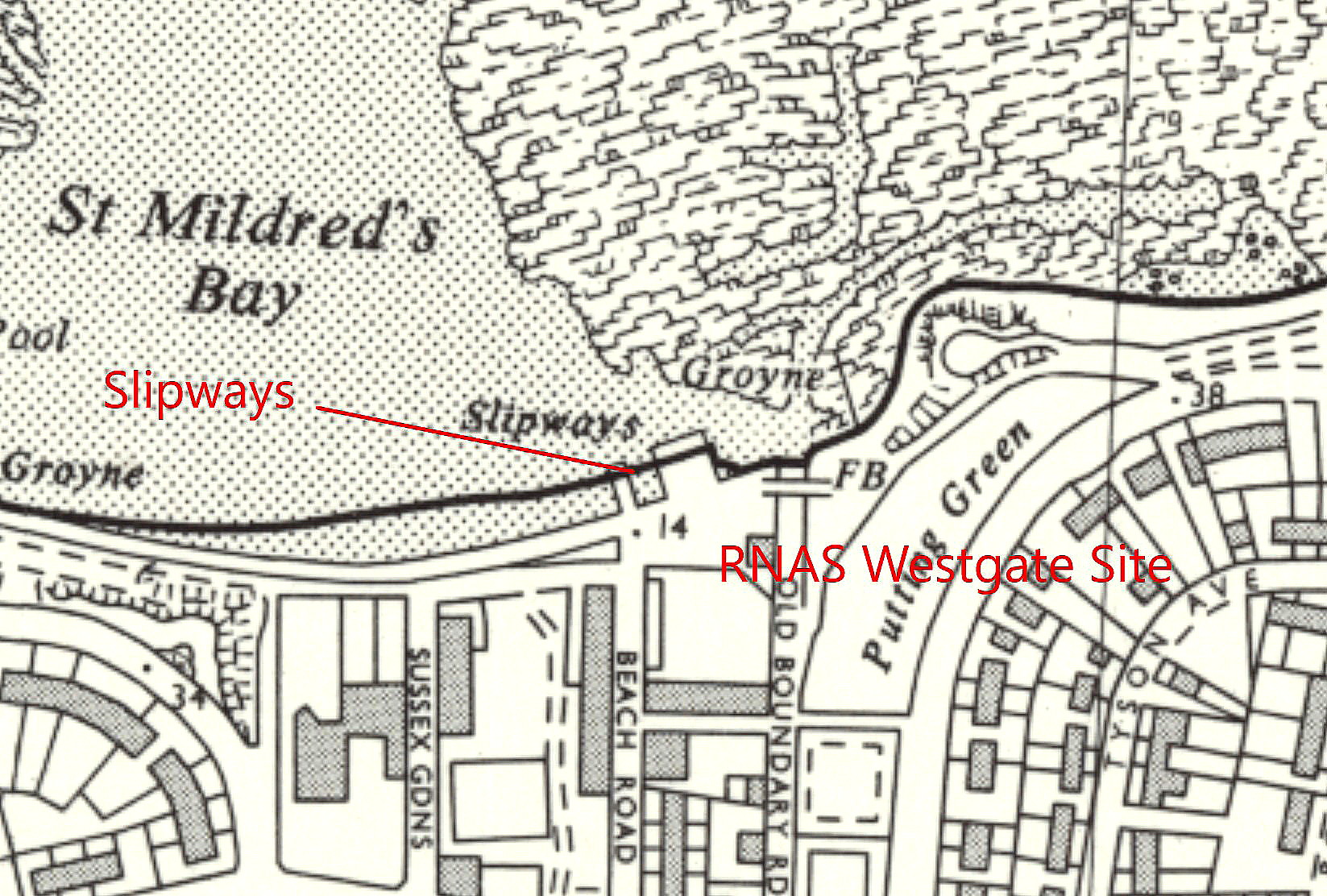Westgate
WESTGATE: Military aerodrome and seaplane base
Note: The first two images have been kindly provided by Mr Michael T Holder. The third and fourth pictures were obtained from Google Earth ©
Military users: RNAS (Royal Naval Air Service) later RAF (Royal Air Force)
Location: On the NE side of Westgate-on-Sea, (St Mildreds Bay), just W of Margate town centre
Period of operation: 1914 to 1920
NOTES: I have Mr Graham D Course to thank for drawing my attention to this site in January 2021. It appears that initially the RNAS had a co-located aerodrome and seaplane base here. However, the aerodrome, located above the cliffs, was far from ideal - especially for night flying. After a pilot was killed attempting to land here at night in 1916, the initial idea was to take-off but land at the newly opened aerodrome at MANSTON. To which all fixed wing operations were soon transferred.
Initially it appears, the seaplanes were transported to and from the sea across the beach, the slipways and hangar being added in the late summer of 1914. One aspect of operations which can be clearly seen in the 1923 picture above, is that seaplanes could only be launched directly from the slipways when the tide was high enough. Presumably a tractor was employed to get them to and from the sea at other times?
It is often forgotten that during the start of WW1, the aerial defence of the U.K. was assigned to the RNAS. The RFC (Royal Flying Corps) being mostly employed on operations abroad - and indeed, not just in Europe on the Western Front. It appears that by the end of 1914 just two seaplanes were based here. The rest being land-planes using the aerodrome.
Without too much doubt the seaplanes were used for aerial reconnaissance and anti-submarine duties. The land-planes would also have been used for trying to intercept German airships, which of course only raided at night - hence the move to MANSTON in 1916. The first recorded raids by 'Zeppelins' was in January 1915 when Great Yarmouth and Kings Lynn were bombed. The term 'Zeppelin' has become generic for German airships, and Zeppelin did build most of them, but Schütte-Lanz airships also raided England. By 1917 the use of airships as bombers for U.K. attacks was being phased out as our night defence methods became increasingly effective.
Note: All four of these images were kindly provided by Mr Michael T Holder.
After the RNAS and RFC were merged to form the RAF on the 1st April 1918, this then became a RAF seaplane Station. It appears that 219 Squadron were partly based here, as they also flew landplanes. The next to arrive were it seems, 406 (Seaplane) Flight, 442 Flight and 230 Squadron.
To date it appears that the types of aircraft employed here as seaplanes and flying boats includes: Avro 504 variants, the Curtiss H12 Large America, the Fairey IIIb, Short 184 and Sopwith Baby.
As always in this 'Guide', if anybody can kindly offer advice, this will be most welcome.
MORE INFORMATION
After the Armistice had been declared, and civil flying being allowed, thanks to Mr James Evans investigating the history of photographs in his family album, (See LYMPNE), we now know that the Evening Standard contracted the Fairey Aviation Company to carry their newspapers from BLACKFRIARS on the Thames in central London to here. They used a Fairey Campagnia floatplane and the first flight was scheduled to depart on the 4th May 1919.
We'd love to hear from you, so please scroll down to leave a comment!
Leave a comment ...
Copyright (c) UK Airfield Guide























